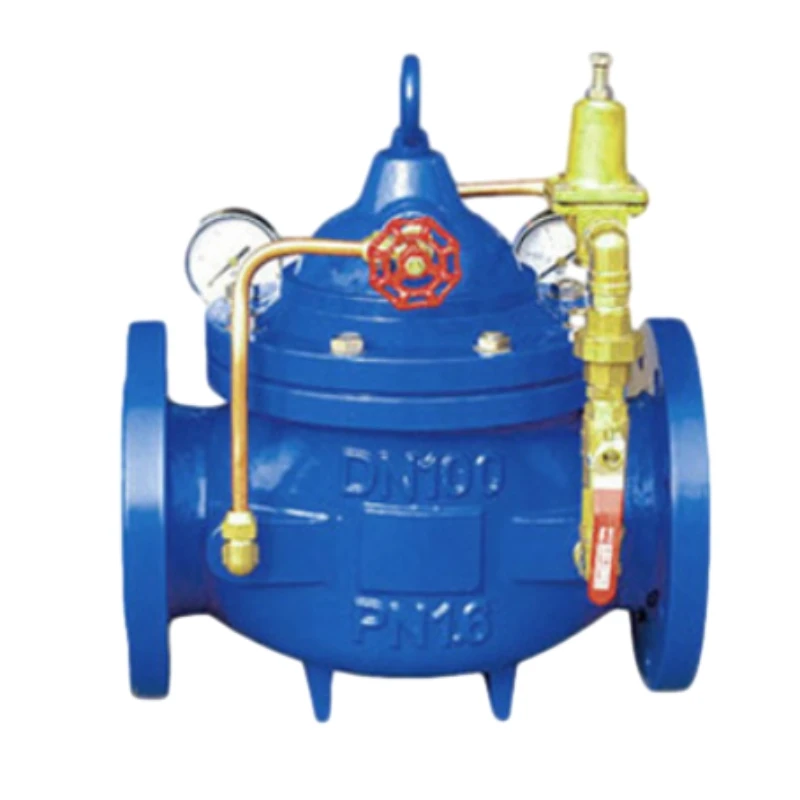نوفمبر . 10, 2024 11:39 Back to list
Types and Functions of Hydraulic Check Valves Explained in Detail
Understanding Hydraulic Check Valve Types
Hydraulic check valves play a crucial role in fluid power systems, ensuring that fluid flows in the desired direction while preventing backflow. This is essential for maintaining system efficiency, safety, and functionality. With a variety of check valves available, each designed for specific applications and environments, understanding the different types can help engineers and technicians make informed decisions.
What is a Hydraulic Check Valve?
A hydraulic check valve is a mechanical device that allows fluid to flow through it in one direction only. This one-way functionality is essential in applications where backflow can lead to damage, inefficiency, or operational safety hazards. Check valves are commonly used in various industries, including manufacturing, construction, and automotive sectors.
Types of Hydraulic Check Valves
There are several types of hydraulic check valves, each tailored for specific applications. Below are the most common types found in hydraulic systems
1. Ball Check Valves Ball check valves use a spherical ball that sits in a seat. When fluid flows in the correct direction, the ball moves away from the seat, allowing flow. If there’s any attempt for backflow, the ball is pushed against the seat, sealing the valve shut. This type is praised for its simple design and reliability.
2. Disc Check Valves Disc check valves utilize a disc that pivots on a hinge. Similar to the ball check, it allows fluid to pass in one direction. Upon backflow, the disc moves back into position to block the reverse flow. Disc check valves are favored in applications where space is a concern, as they have a lower profile compared to other types.
3. Spring-loaded Check Valves These valves feature a spring mechanism that holds the valve closed when not in use. When fluid flows in the correct direction, the pressure overcomes the spring force, allowing the valve to open. In cases of backflow, the spring forces the valve to close promptly. This type is particularly useful in controlling flow in systems that might experience pressure fluctuations.
hydraulic check valve types

4. Swing Check Valves Swing check valves have a swinging arm, or disk, that opens on forward flow and closes due to gravity during backflow. They are predominantly used in larger pipeline systems where the flow rates are high, allowing for a robust solution to prevent backflow. However, they can be sensitive to pressure drops and might lead to slamming if not properly sized.
5. Lift Check Valves In lift check valves, the valve element moves up and down, similar to a piston, in response to pressure changes. These valves can be found in applications requiring quicker response times and can handle higher flow rates. Lift check valves are typically used in high-pressure systems and offer low resistance to fluid flow.
6. Pressure Relief Check Valves These valves control the pressure within a system and only open when preset pressure levels are achieved. They are used in conjunction with other check valves to protect hydraulic circuits from high-pressure conditions that could lead to catastrophic failure.
Choosing the Right Check Valve
Selecting the appropriate hydraulic check valve is critical for ensuring the reliability and efficiency of fluid systems. Factors to consider include
- Flow Rate Understanding the expected flow rate can determine which type of check valve is appropriate. - Pressure Ratings The working pressure of the hydraulic system should be compatible with the valve's specifications. - Operating Environment Consider whether the valve will face corrosive fluids, extreme temperatures, or particulates that could obstruct flow. - Installation Space Some valve types require more vertical space than others, which can be a deciding factor in tight installations.
Conclusion
Hydraulic check valves are essential components of fluid power systems, safeguarding against backflow and ensuring optimal flow control. By understanding the different types of check valves available, their respective advantages, and considerations for selection, professionals can better equip their hydraulic systems for efficiency and reliability. Proper implementation and maintenance of these valves ultimately contribute to the longevity and performance of hydraulic systems across various industries.
-
Y Type Strainer Maintains System Efficiency Long TermNewsJul.15,2025
-
Valve Selection Guide for Industrial ApplicationsNewsJul.15,2025
-
Steel Fab Table Provides Durable Work Surface for WeldingNewsJul.15,2025
-
Pad Iron Provides Stable Support for Heavy MachineryNewsJul.15,2025
-
One Inch Check Valve Fits Standard Plumbing SystemsNewsJul.15,2025
-
Measuring Micrometer Ensures Precise Dimensional AccuracyNewsJul.15,2025
Related PRODUCTS









